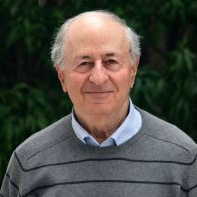Nanostructured Materials for Electrochemical Energy Storage
A special issue of Materials (ISSN 1996-1944). This special issue belongs to the section "Energy Materials".
Deadline for manuscript submissions: closed (10 September 2023) | Viewed by 28671
Special Issue Editors
Interests: energy storage and conversion; solid state ionics; nanomaterials; nanoionics; lithium batteries; energy materials; insertion reactions; vibrational spectrocopy
Special Issues, Collections and Topics in MDPI journals
Interests: electrochemistry; energy storage; lithium batteries; electrode materials; nano-materials; electrochemical sensors; Raman spectroscopy
Special Issues, Collections and Topics in MDPI journals
Special Issue Information
Dear colleagues,
Many efforts are currently made to increase the limited capacity of energy storage systems such as Li-ion batteries and supercapacitors using insertion and/or conversion electrodes. The way to reach this goal is to move to nanostructured materials because the larger surface to volume ratio of particles and the reduction of the electron and Li path length imply a larger specific capacity. Additionally, nanoparticles can accommodate such a dilatation/contraction during cycling, resulting in a calendar life compatible with a commercial use. This Special Issue will focus on the advanced nanomaterials for energy storage that are the most promising for practical applications. Both theoretical and experimental papers, communications, and reviews related to nanostructured materials for electrochemical energy storage are all welcome.
Prof. Christian M. Julien
Prof. Boris Markovsky
Guest Editors
Manuscript Submission Information
Manuscripts should be submitted online at www.mdpi.com by registering and logging in to this website. Once you are registered, click here to go to the submission form. Manuscripts can be submitted until the deadline. All submissions that pass pre-check are peer-reviewed. Accepted papers will be published continuously in the journal (as soon as accepted) and will be listed together on the special issue website. Research articles, review articles as well as short communications are invited. For planned papers, a title and short abstract (about 100 words) can be sent to the Editorial Office for announcement on this website.
Submitted manuscripts should not have been published previously, nor be under consideration for publication elsewhere (except conference proceedings papers). All manuscripts are thoroughly refereed through a single-blind peer-review process. A guide for authors and other relevant information for submission of manuscripts is available on the Instructions for Authors page. Materials is an international peer-reviewed open access semimonthly journal published by MDPI.
Please visit the Instructions for Authors page before submitting a manuscript. The Article Processing Charge (APC) for publication in this open access journal is 2600 CHF (Swiss Francs). Submitted papers should be well formatted and use good English. Authors may use MDPI's English editing service prior to publication or during author revisions.
Keywords
- Nanostructures
- Energy storage
- Batteries
- Supercapacitors
- Conversion mechanism
- Advanced electrodes







